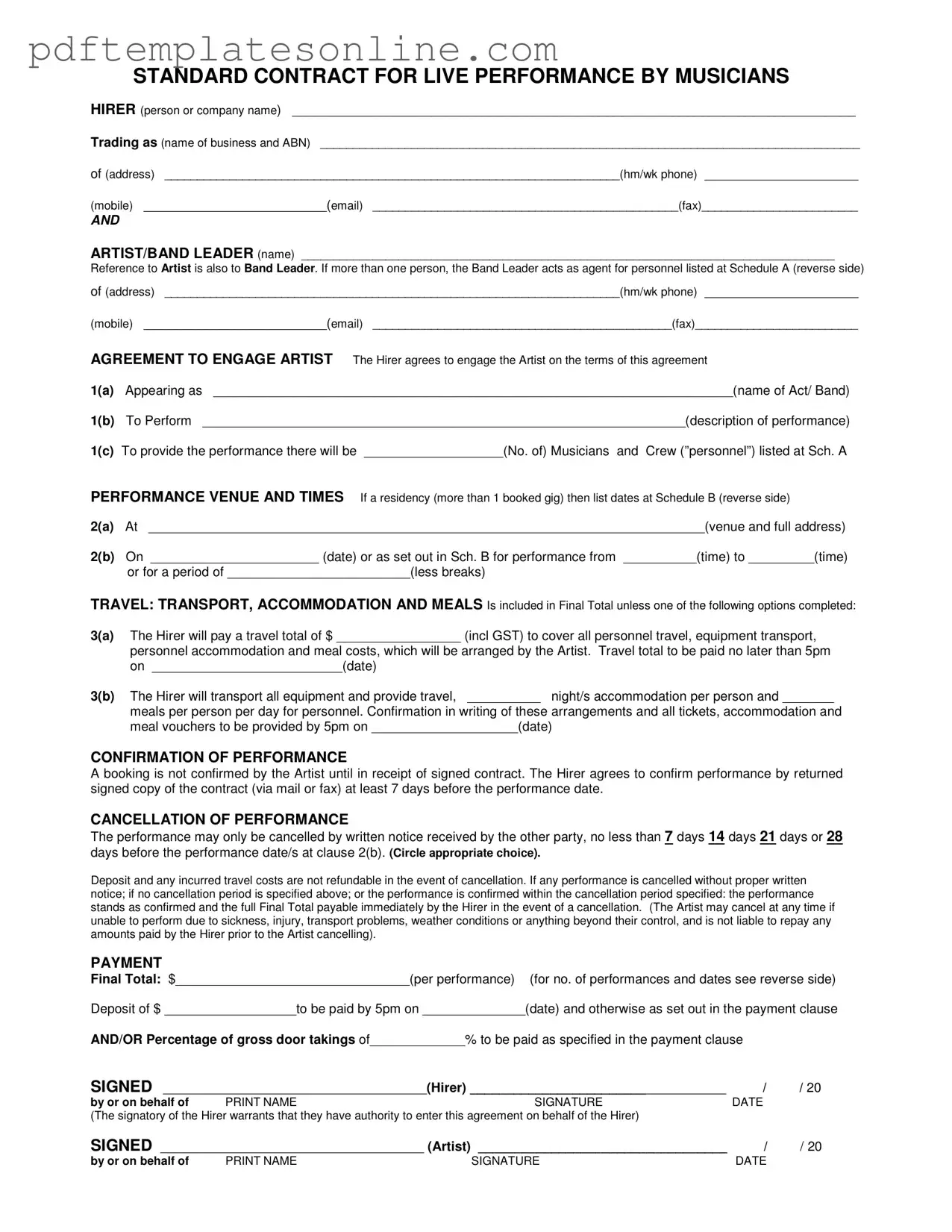Filling out the Live Performance Contract form can be a straightforward process, but many people make common mistakes that can lead to misunderstandings or disputes. Awareness of these pitfalls can help ensure a smoother experience for both the Hirer and the Artist.
One frequent error occurs when individuals fail to provide complete contact information. Missing details such as a phone number or email can hinder communication. It is crucial for both parties to ensure that all fields, especially those related to contact information, are filled out accurately. This simple step can prevent confusion later on.
Another common mistake is neglecting to specify the number of musicians and crew involved in the performance. This section is essential for logistical planning. If the Hirer does not indicate the correct number, it may lead to insufficient arrangements for travel, accommodation, and meals. Therefore, clarity in this area is vital.
People often overlook the importance of confirming the performance date and time. This mistake can lead to scheduling conflicts. It is advisable to double-check these details against the agreed-upon schedule to avoid last-minute surprises. Including a reference to Schedule B can also help clarify multiple performance dates.
In the section regarding travel arrangements, some Hirers mistakenly assume that all costs are included without specifying their preferences. When filling out the travel section, it is essential to clearly state whether the Hirer will cover travel expenses or if the Artist will manage these arrangements. This clarity helps prevent disputes over payment responsibilities.
Moreover, the cancellation policy is often misunderstood. Some Hirers might not circle the appropriate cancellation period, which can lead to significant financial implications. It is vital to read this section carefully and select the correct timeframe to avoid unexpected charges in case of cancellation.
Payment terms are another area where mistakes frequently occur. Individuals may forget to fill in the deposit amount or the final total. This oversight can create confusion regarding financial obligations. Ensuring that these figures are clearly stated helps both parties understand their financial commitments.
Lastly, many people neglect to sign and date the contract properly. A missing signature can render the contract invalid. Both the Hirer and the Artist should ensure that their signatures are present, along with the date, to formalize the agreement effectively.
In conclusion, taking the time to carefully complete the Live Performance Contract form can save both the Hirer and the Artist from potential misunderstandings. By avoiding these common mistakes, both parties can focus on what truly matters: a successful and enjoyable performance.
